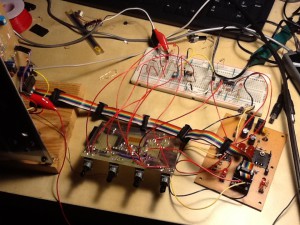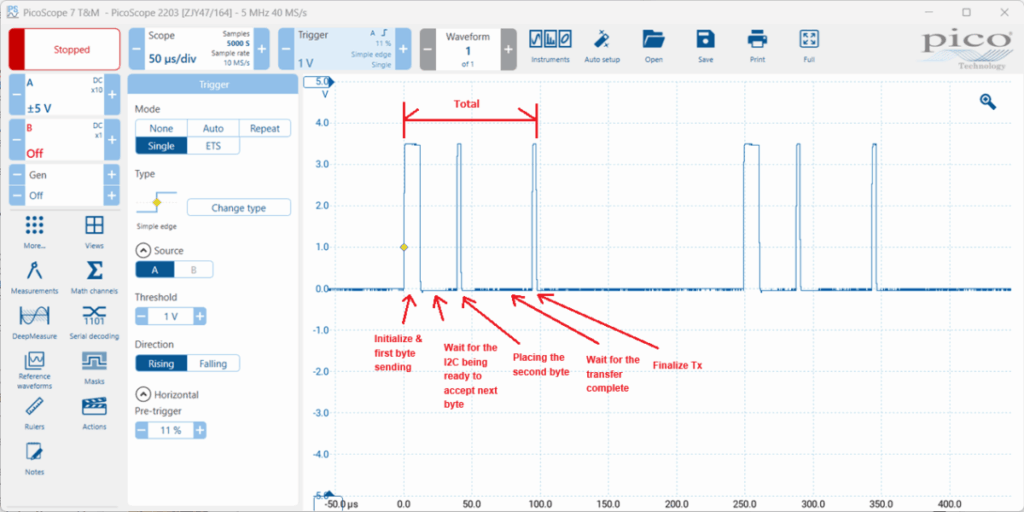I’ve been working on implementing Envelope Generator into microprocessors. Output of an Envelope Generator consists of rising and falling exponential curve. I’m currently doing table lookup to generate those curves.
https://github.com/naokiiwakami/vceg
This is a quick and straightforward approach, and you don’t have to be worried much about data resolution. But the program is a little complicated, and memory consuming. I don’t really like this approach. So I started to think about alternative approaches.
Mathematically, an exponentially decaying curve can be calculated recursively by the following equation:
V(i+1) = V(i) * k
where 0 <= k < 1
This is very simple. You can program this such as:
double value = INITIAL_VALUE;
double decay_factor = 0.99309249543703590153321021688807;
while (true) {
value *= decay_factor;
}but if you implement this algorithm into a microcontroller, the story is a bit more complicated.
I’m planning to use an AVR (e.g. atmega168) controller which has limited number of registers. So floating point multiplication is generally slow in the controller. So I would like to avoid floating point data types.
So shall I go for a simple integer calculation? It’s not feasible. For example, if I update the value in every 10ms (100 updates per second) and would like to make a decaying curve that reduces its value to 50% after 1 second, the decay factor k would be
k = 0.5 ^ (1 / 100) = 0.99309249543703590153321021688807
It’s less than 1 so cannot be expressed by an integer.
There’s a technique called fixed point multiplication. This fundamentally uses integers but can handle fractions. This is my first time to try this technique, so learned how you do it. I found a good instruction:
In short, you can multiply a fractional number by a scaling factor to make it an integer, run the calculation using the integer value, then scale the result back to another fractional number by dividing by the scaling factor. The scaling can be done quickly by bit shifting if the scaling factor is a power of 2.
Tried to write it in C. In this example, the scaling factor for the decaying value is 64 (=2^6) and one for the decay rate is 65536 (=2^16). Both values are 16-bit integers, so their multiplication should fit within 32-bit range. So the calculation for the decay is done using 32-bit integers.
#include <stdio.h>
#include <stdint.h>
int main(int argc, char *argv[]) {
// fixed point integer 10bit.6bit
uint16_t value = (1023) << 6;
// fixed point integer .16bit
uint16_t decay_factor = 0.99309249543703590153321021688807 * 65536;
for (uint16_t i = 0; i < 1000; ++i) {
// multiplication
uint32_t temp = value * decay_factor;
value = temp >> 16;
// retrieve the integer part
uint16_t output = value >> 6;
printf("%d %d\n", i, output, 10);
}
return 0;
}Ran it on my PC (not on the microprocessor yet). Plotted the result to a graph:

OK it looks good so far.





